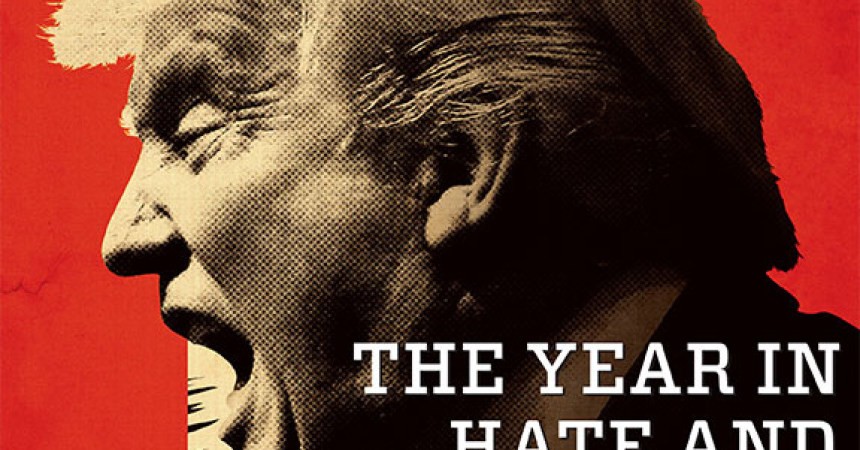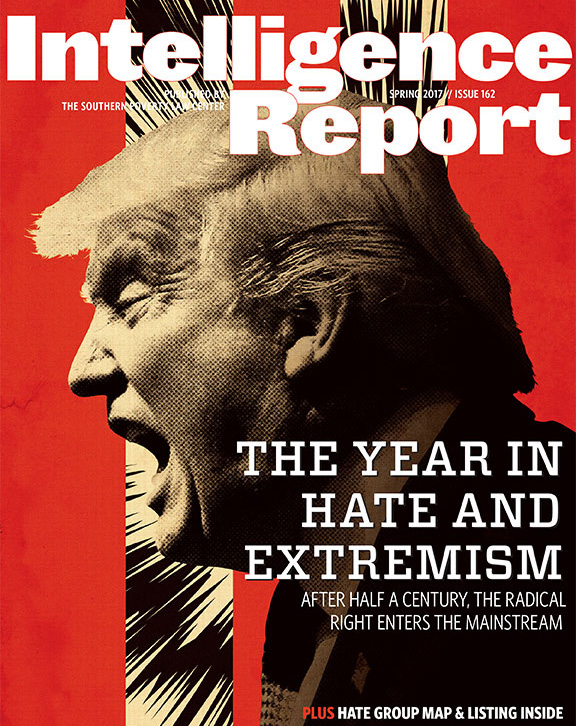
Hate groups increase for second consecutive year as Trump electrifies radical right
By Chris B. Bennett
The number of hate groups in the United States rose for a second year in a row in 2016 as the radical right was energized by the candidacy of Donald Trump, according to the Southern Poverty Law Center’s (SPLC) annual census of hate groups and other extremist organizations.
The most dramatic growth was the near-tripling of anti-Muslim hate groups – from 34 in 2015 to 101 last year. However fear has grown among many racial and ethnic minority groups. In a post-election SPLC survey of 10,000 educators, 90 percent said the climate at their schools had been negatively affected by the campaign. Eighty percent described heightened anxiety and fear among students, particularly immigrants, Muslims and African-Americans. Numerous teachers reported the use of slurs, derogatory language and extremist symbols in their classrooms.
The growth has been accompanied by a rash of crimes targeting Muslims, including an arson that destroyed a mosque in Victoria, Texas, just hours after the Trump administration announced an executive order suspending travel from some predominantly Muslim countries. The latest FBI statistics show that hate crimes against Muslims grew by 67 percent in 2015, the year in which Trump launched his campaign.
The report, contained in the Spring 2017 issue of the SPLC’s Intelligence Report, includes the Hate Map showing the names, types and locations of hate groups across the country.
The SPLC found that the number of hate groups operating in 2016 rose to 917 – up from 892 in 2015. The number is 101 shy of the all-time record set in 2011, but high by historic standards.
“2016 was an unprecedented year for hate,” said Mark Potok, senior fellow and editor of the Intelligence Report. “The country saw a resurgence of White nationalism that imperils the racial progress we’ve made, along with the rise of a president whose policies reflect the values of White nationalists. In Steve Bannon, these extremists think they finally have an ally who has the president’s ear.”
The increase in anti-Muslim hate was fueled by Trump’s incendiary rhetoric, including his campaign pledge to bar Muslims from entering the United States, as well as anger over terrorist attacks such as the June massacre of 49 people at a gay nightclub in Orlando.
The overall number of hate groups likely understates the real level of organized hatred in America as a growing number of extremists operate mainly online and are not formally affiliated with hate groups.
Aside from its annual census of extremist groups, the SPLC found that Trump’s rhetoric reverberated across the nation in other ways. In the first 10 days after his election, the SPLC documented 867 bias-related incidents, including more than 300 that targeted immigrants or Muslims.
In contrast to the growth of hate groups, antigovernment “Patriot” groups saw a 38 percent decline – plummeting from 998 groups in 2015 to 623 last year. Composed of armed militiamen and others who see the federal government as their enemy, the “Patriot” movement over the past few decades has flourished under Democratic administrations but declined dramatically when President George W. Bush occupied the White House.
The SPLC also released an in-depth profile of the Alliance Defending Freedom (ADF), an anti-LGBT hate group. Leaders of the legal advocacy organization and its affiliated lawyers have regularly demonized LGBT people, falsely linking them to pedophilia, calling them “evil” and a threat to children and society, and blaming them for the “persecution of devout Christians.” The group also has supported the criminalization of homosexuality in several countries.








